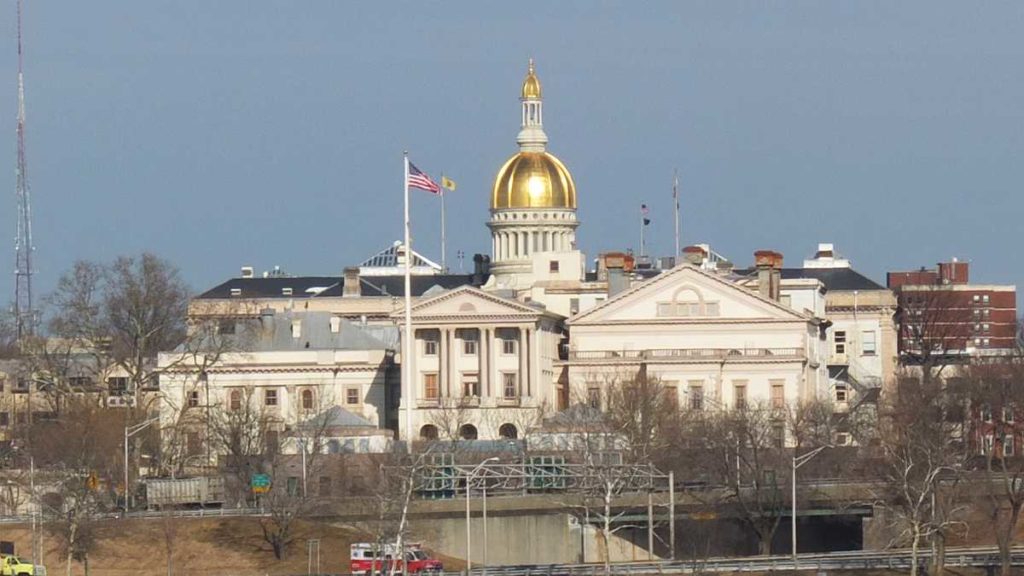Nature Conservancy Urges Nature-Based Coastal Solutions at New Jersey Hearing

Nature Conservancy Urges Nature-Based Coastal Solutions at New Jersey Hearing
Ten Years Post-Sandy, Nature’s Benefits and EO 89/100 in Focus at Joint Legislative Committee Meeting
CHESTER, NJ – Representatives from The Nature Conservancy (TNC) spoke in Trenton today during the New Jersey Senate Environment and Solid Waste Committee and Assembly Special Committee on Infrastructure and Natural Resources joint meeting concerning the status of New Jersey’s storm preparedness nearly 10 years following the devastation of Superstorm Sandy. Their testimony focused on the benefits of nature-based solutions to climate challenges at the Jersey Shore and the positive impact that Executive Orders 89 and 100 have had on the state.
“In the decade since Superstorm Sandy we have learned that nature can be a strong ally in protecting communities and easing the negative impacts of major weather events and changing environmental conditions,” said Barbara Brummer, State Director for The Nature Conservancy in New Jersey. “Just as we invest in replenishing beaches and dunes along our Atlantic shore, we must invest in natural restoration of our coastal salt marshes.”
New Jersey’s coast has experienced accelerated sea level rise combined with more frequent and extreme weather events. The higher levels of precipitation and stronger, more unpredictable conditions cause hazardous flooding and erosion; even on sunny days many coastal towns struggle with nuisance flooding from high tides or wind. Unfortunately, many existing shoreline protection systems were not designed to safeguard communities from these intensified risks. Nature-based solutions that leverage native habitats or enhance landscapes through restoration play an important role in helping improve community resiliency
“Executive order 89 created a statewide climate change resilience strategy and Executive order 100 directs sweeping regulatory reform to reduce emissions and adapt to climate change — great first steps to make our coastlines more resilient,” said Elizabeth Semple, Director of Adaptation for The Nature Conservancy in New Jersey. “Increasing the use of nature-based solutions, prioritizing resilience of vulnerable populations, leveraging unprecedented federal funding and reinforcing Governor Murphy’s executive orders with New Jersey legislative action could solidify long term climate change action.”
Coastal salt marshes slow the energy of incoming waves, support vibrant recreation opportunities, sequester carbon, and provide critical habitat for marine life and birds. Many of these grassy expanses are already dying off from water inundation, and the 2020 New Jersey Scientific Report on Climate Change points to worsening scenarios on the horizon.
The report cites a 50% chance that by 2050 sea level rise will meet or exceed 1.4 feet and a 17% chance that it will exceed 2.1 feet, putting a significant amount of New Jersey’s 200,000 acres of salt marshes at risk of drowning. The increased flooding and salinity are “projected to lead to a loss of 92% of brackish marshes, 32% of tidal swamps, and 6% of tidal fresh marshes in the Delaware Estuary by 2100.”
TNC has been on the leading edge of piloting and championing an innovative strategy using clean sediment dredged from clogged boating channels to raise the elevation of drowning salt marshes. This baseline boost gives marshes a chance to adapt, persist and continue to provide protective benefits in the face of climate challenges.
About The Nature Conservancy
The Nature Conservancy, a global 501(c)(3) nonprofit, has been committed to protecting the lands and waters on which all life depends for more than 60 years in New Jersey. Using science and an equity lens to guide our focus and execution, we are tackling the dual threats of biodiversity loss and climate change, maximizing resilience and benefits for nature and people.







